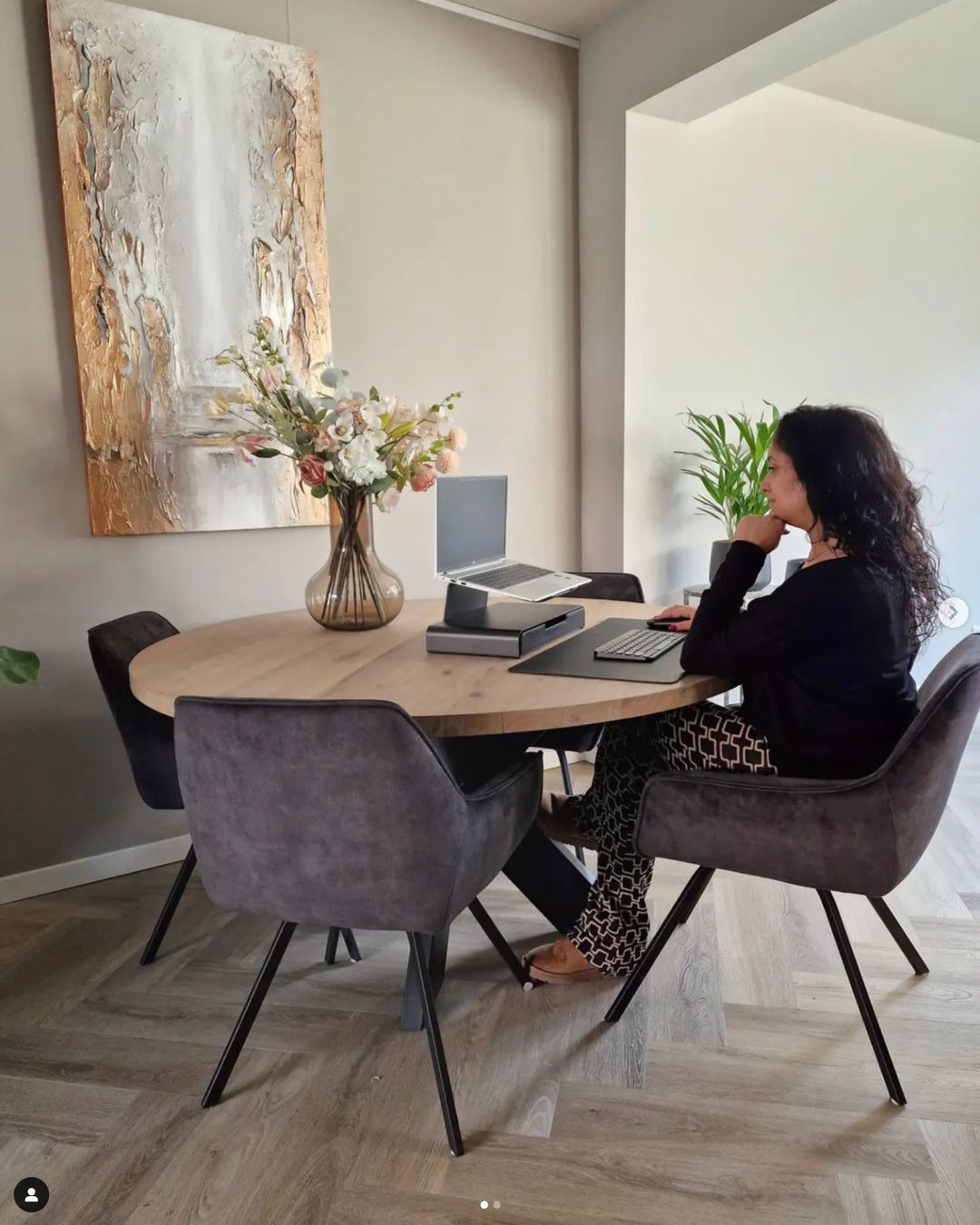Good working posture is more than just sitting upright; it is an art that benefits your well-being and productivity. In this blog post you will discover how to best position your body during your working hours. From the position of your arms to the position of your back, every detail counts for a healthy work experience.
Seat height
Let's start with the basics: your chair. This faithful companion should not only support you, but also encourage you to keep your back straight. A chair that supports your body is crucial. Your feet should be flat on the floor and your knees should form a 90-degree angle.
Position of the arms and height of the desk
Your arms hold part of the key to good posture. Make sure your elbows stay close to your body. Your desk should be set so that your forearms are parallel to the ground when you type. But how do you measure this? Sit up straight, place your arms at a 90-degree angle and adjust the height of your desk so that your forearms rest without your shoulders rising. This helps prevent tension in your shoulders and neck. There are desks with a handy measurement scale on the side, so you can see exactly which height is suitable for you. No size division? Then use a measuring tape. If the desk is not height adjustable, try adjusting your seat height. If your feet are no longer flat on the ground, we recommend placing something under your feet.
The right viewing height
Speaking of your neck, it also deserves attention. Your screen should be at eye level so that your neck remains in a neutral position. This prevents you from constantly looking down or up, which can lead to neck pain. If you work with a laptop, place it on a laptop stand and work with an external keyboard and mouse. If you also work with an extra monitor, place it on a monitor stand . This makes it easy to position it at the right height.
Work within shoulder width
Your mouse use also plays an important role. Place your mouse close to your keyboard to avoid excessive reaching and twisting of the arm. This way you prevent overload and keep your shoulders relaxed. Also pay attention to the width of your work area - keep everything within shoulder width. This ensures that you are not constantly twisting or bending to reach your supplies. This way you stay in a natural position that does not burden your body. For example, use a compact (narrow) keyboard so that you can easily hold your mouse next to the keyboard. Another tool is the Aptiq desk mat , which has specific dimensions and actually forces you to work within shoulder width.
Remember that small adjustments can make a big difference. At Aptiq we not only offer desk accessories that look stylish, but they also contribute to a good working posture.







